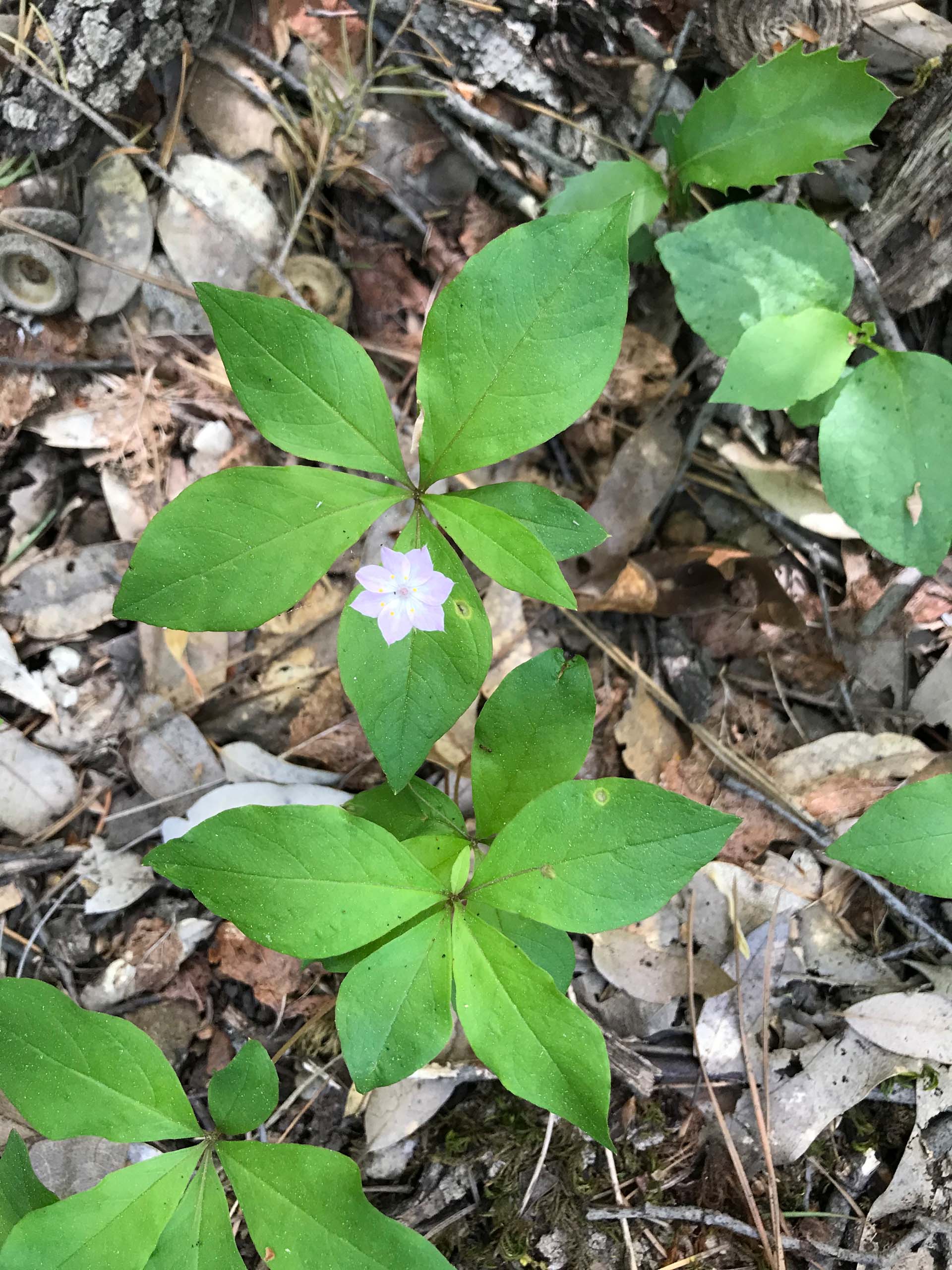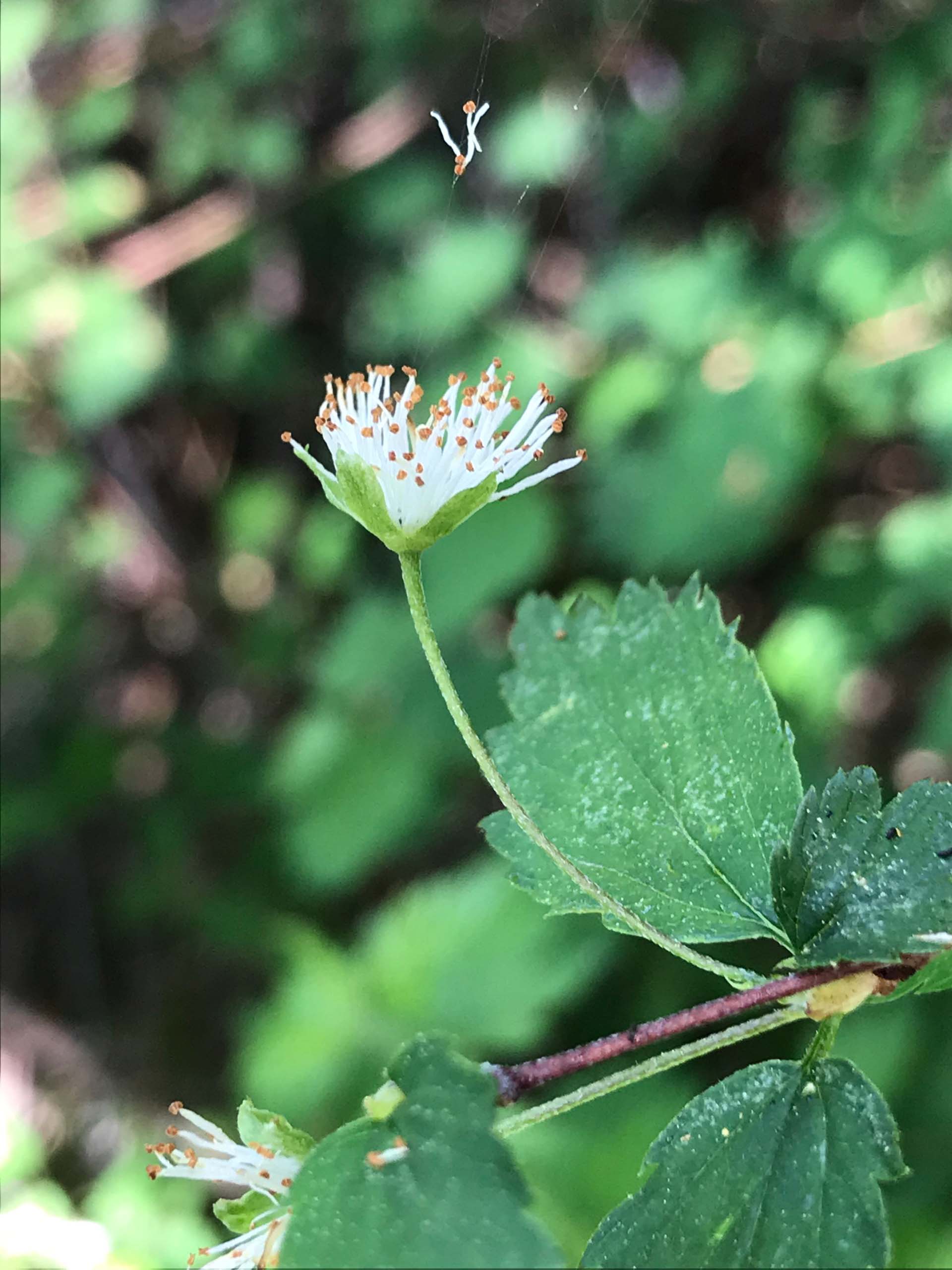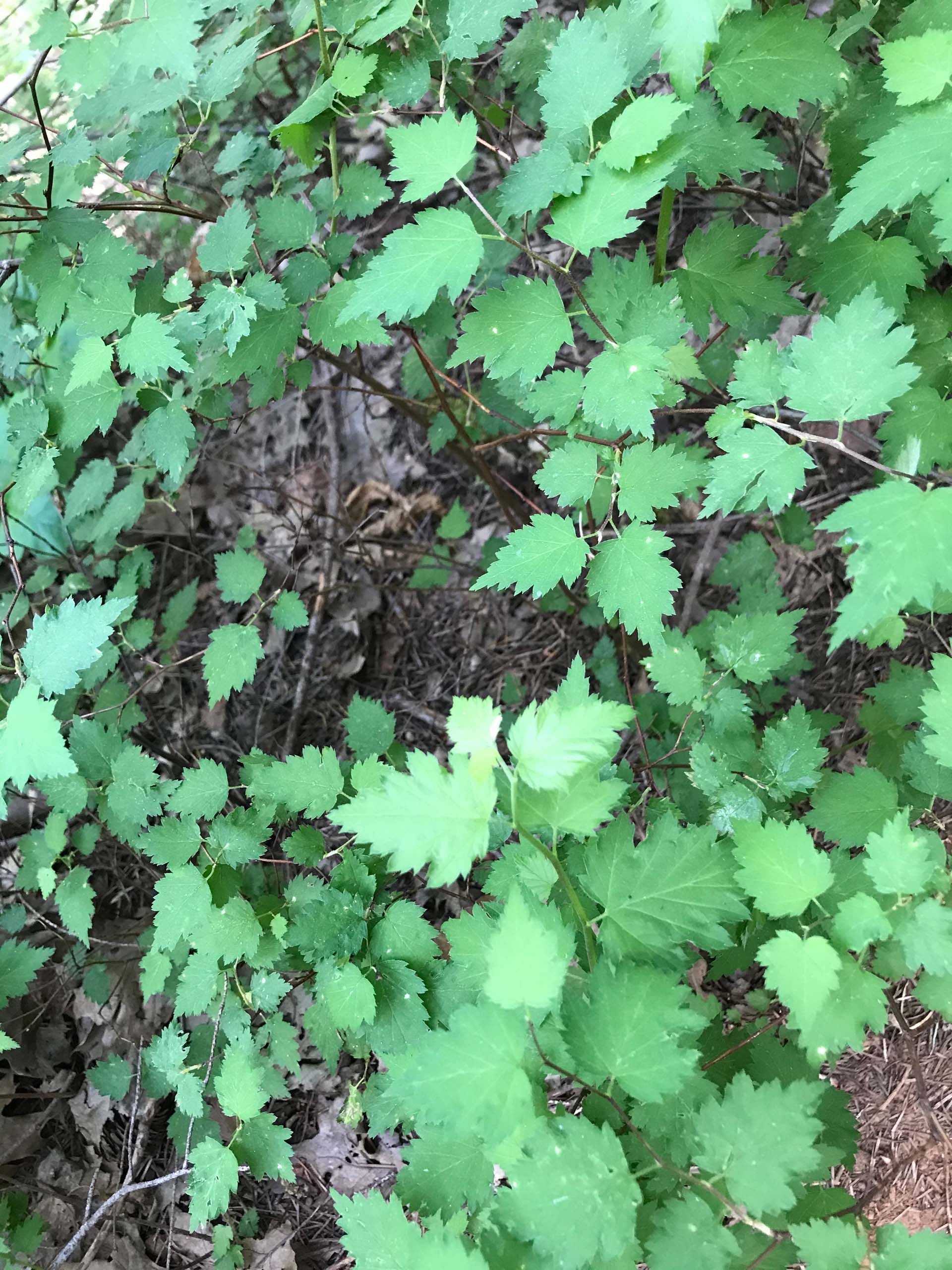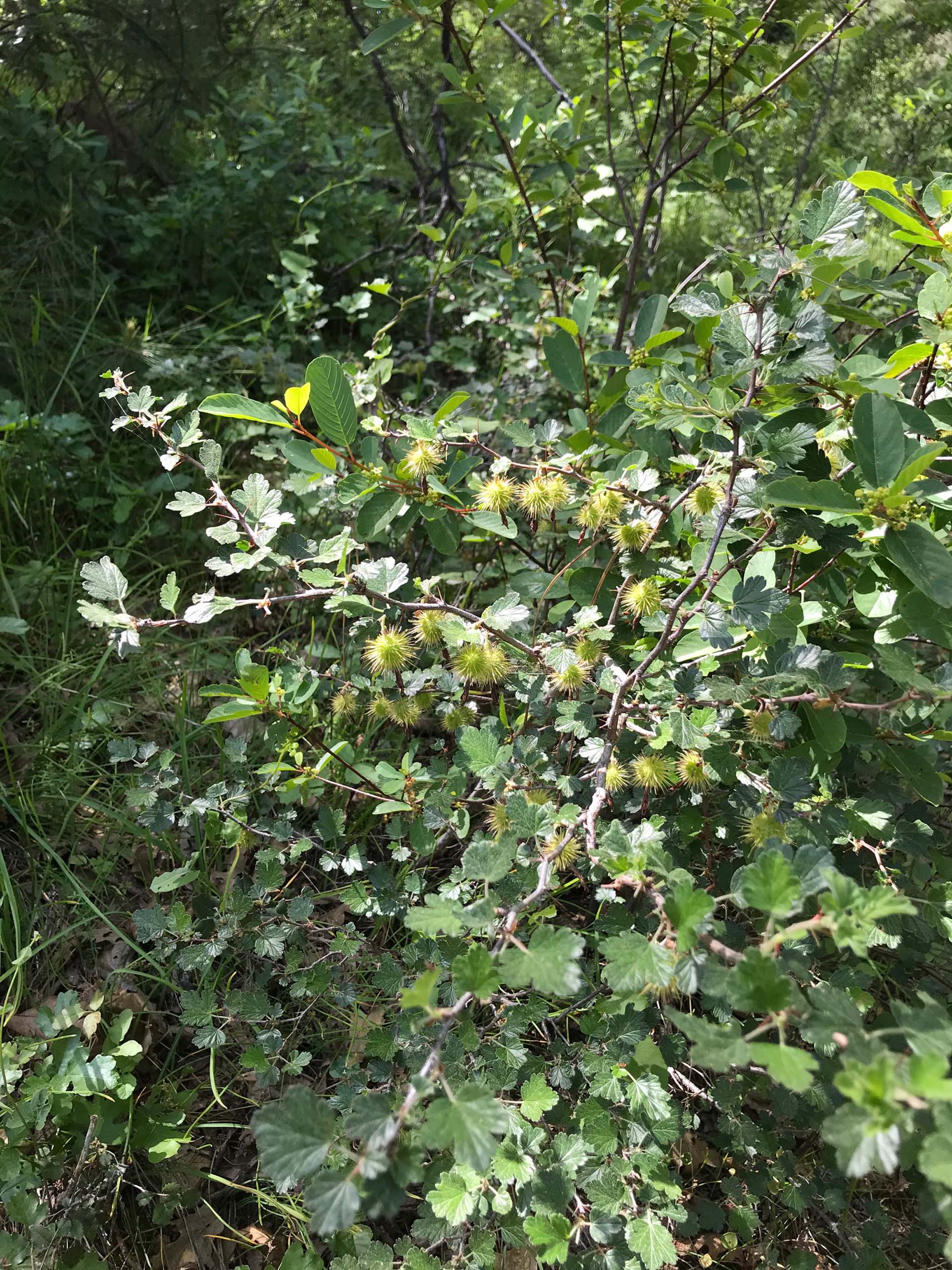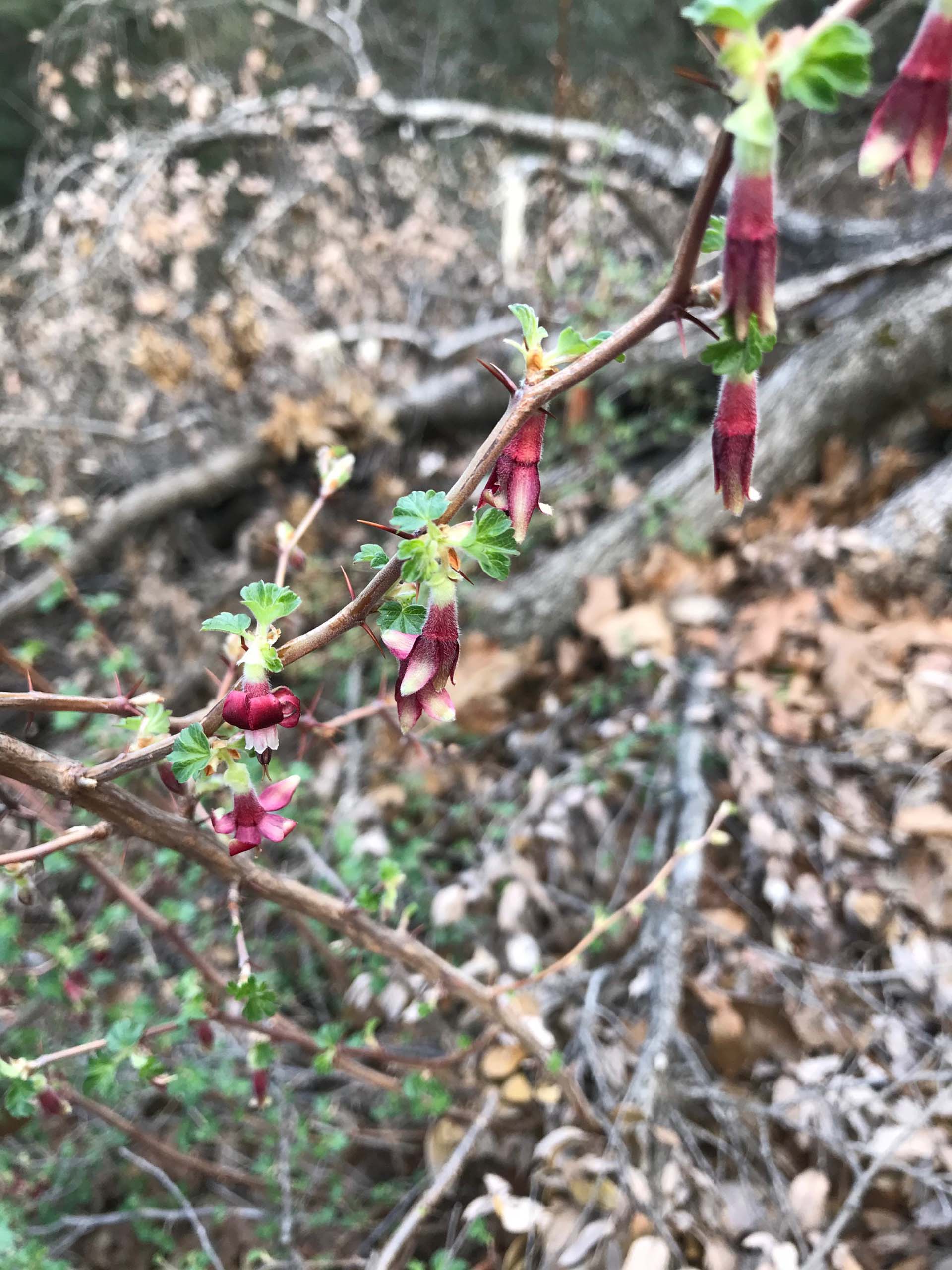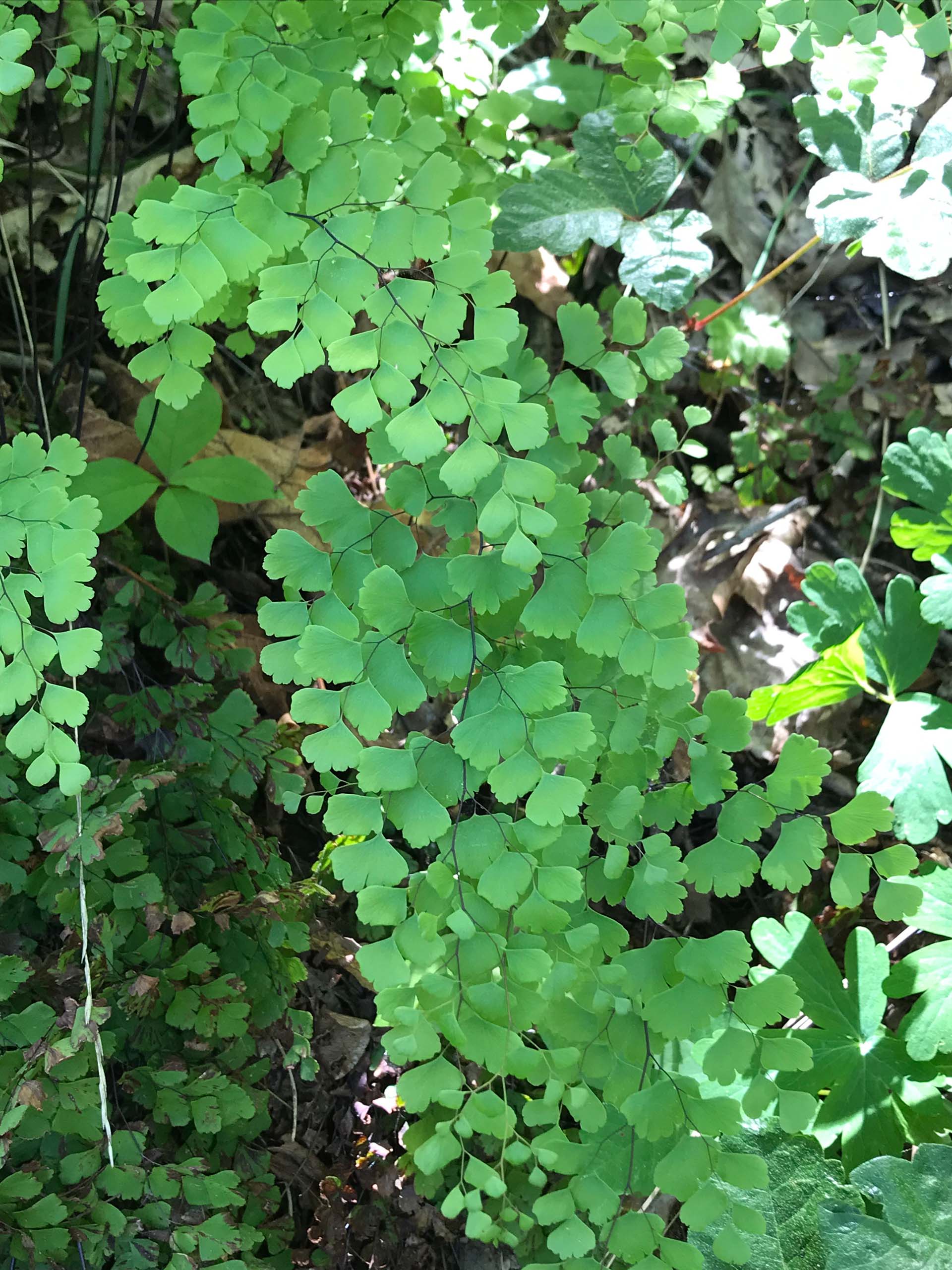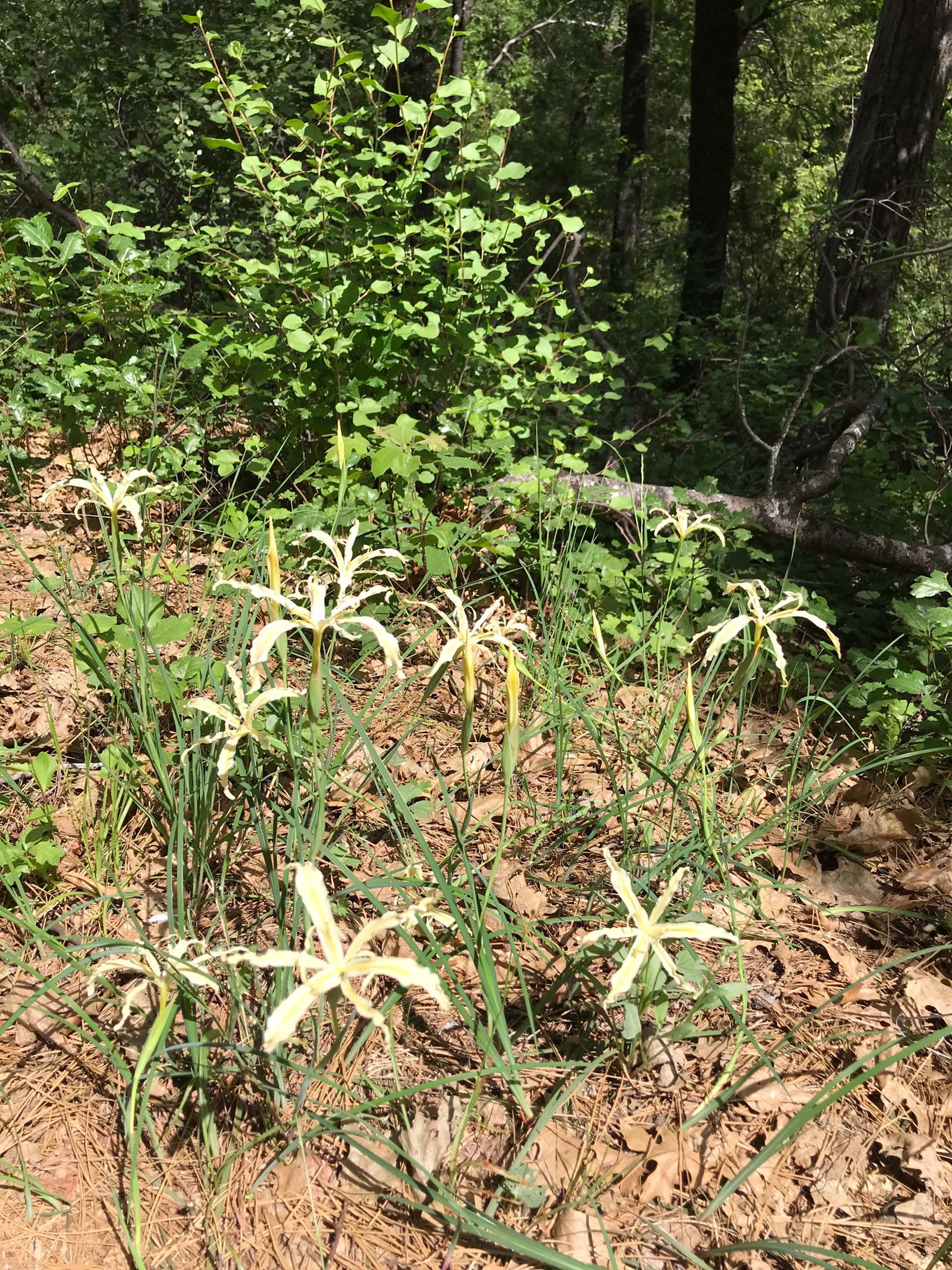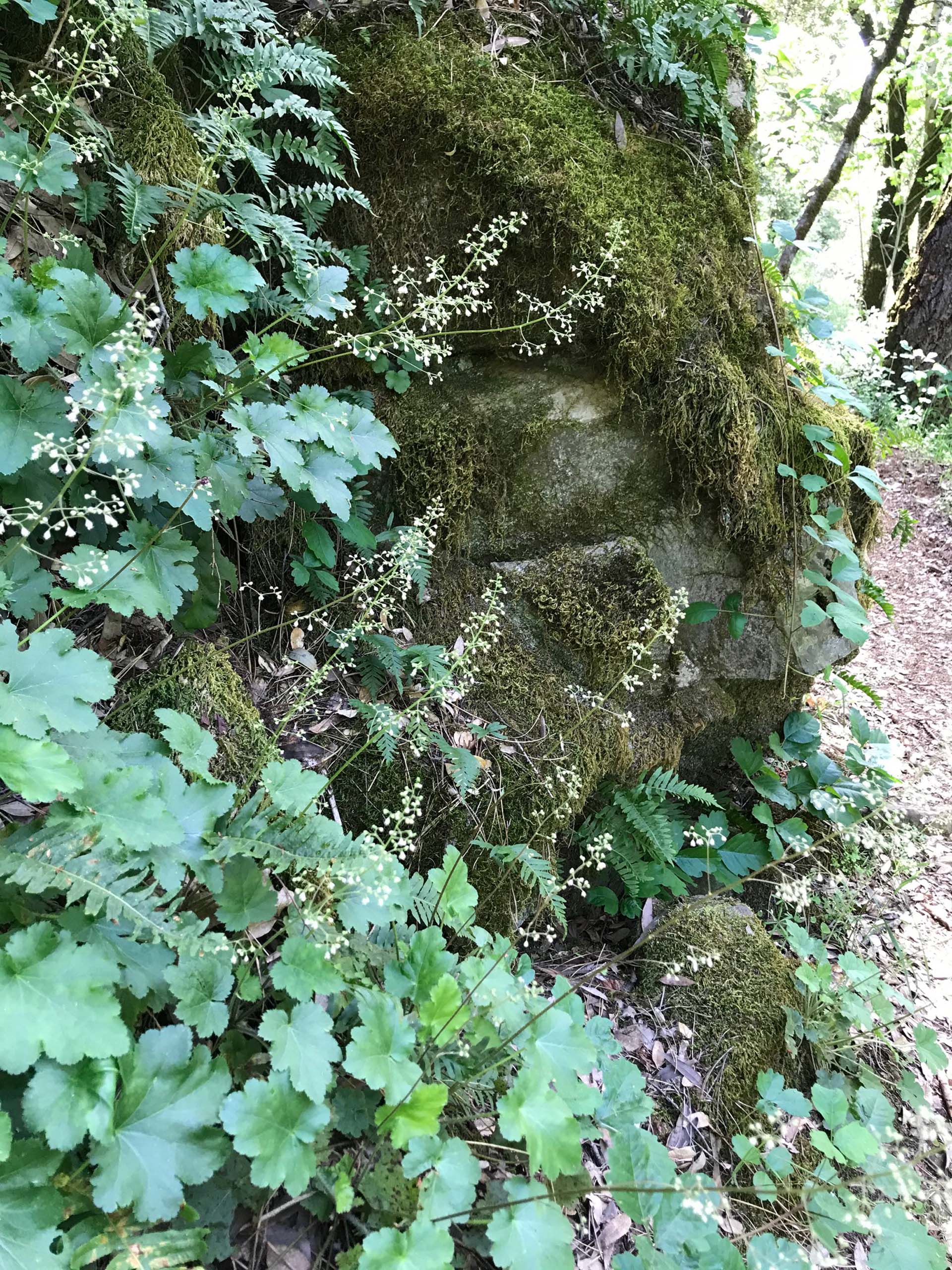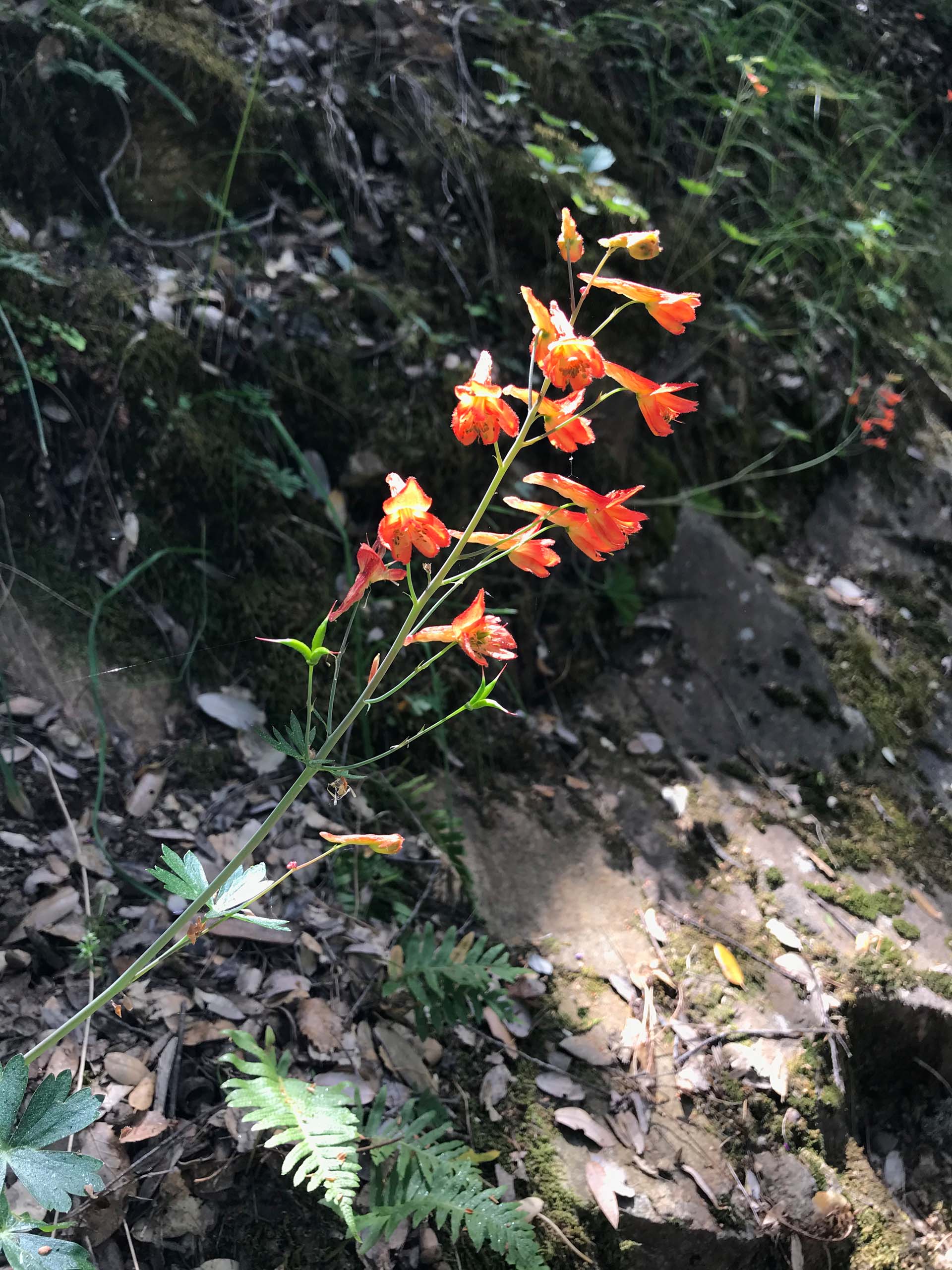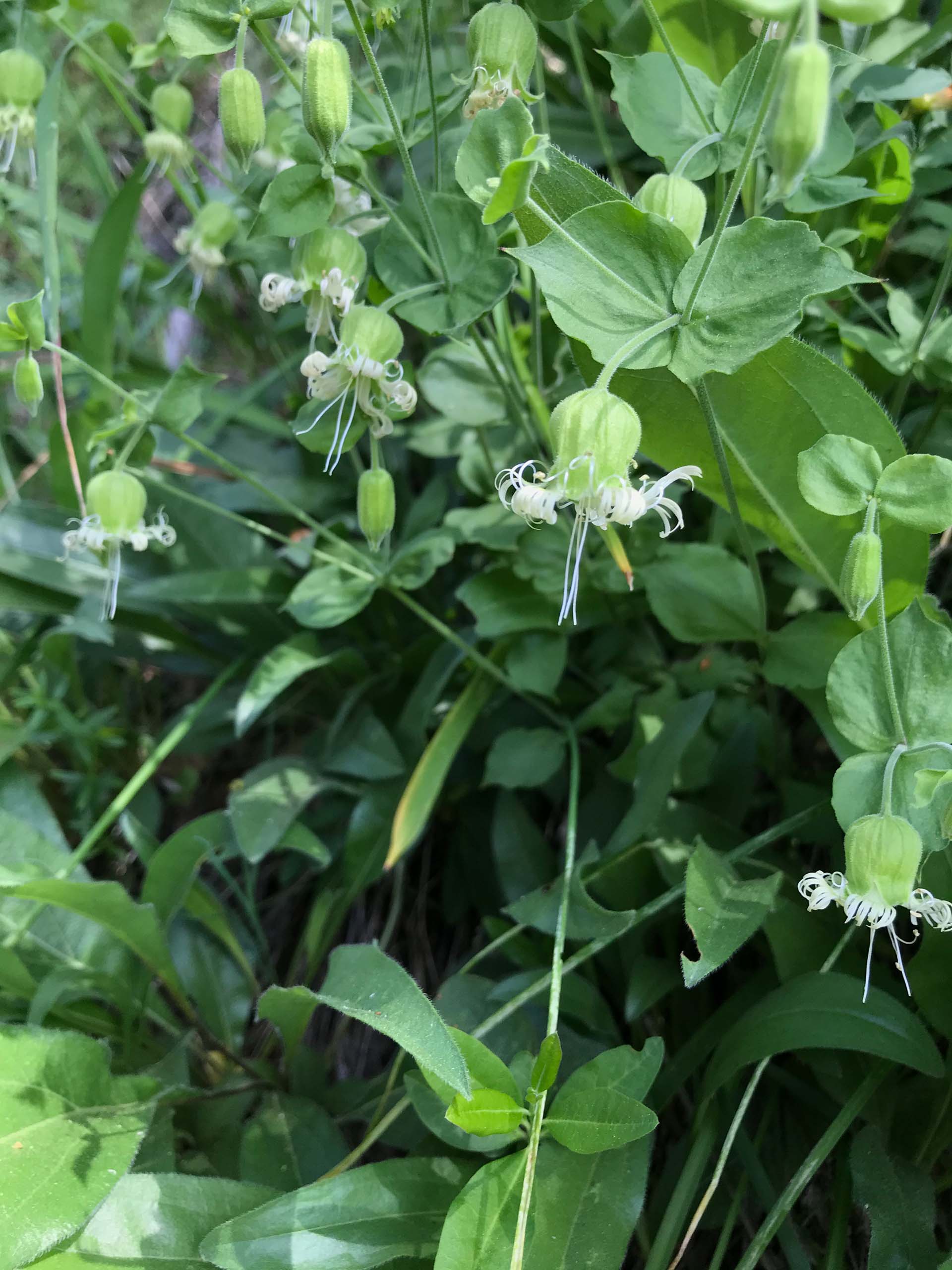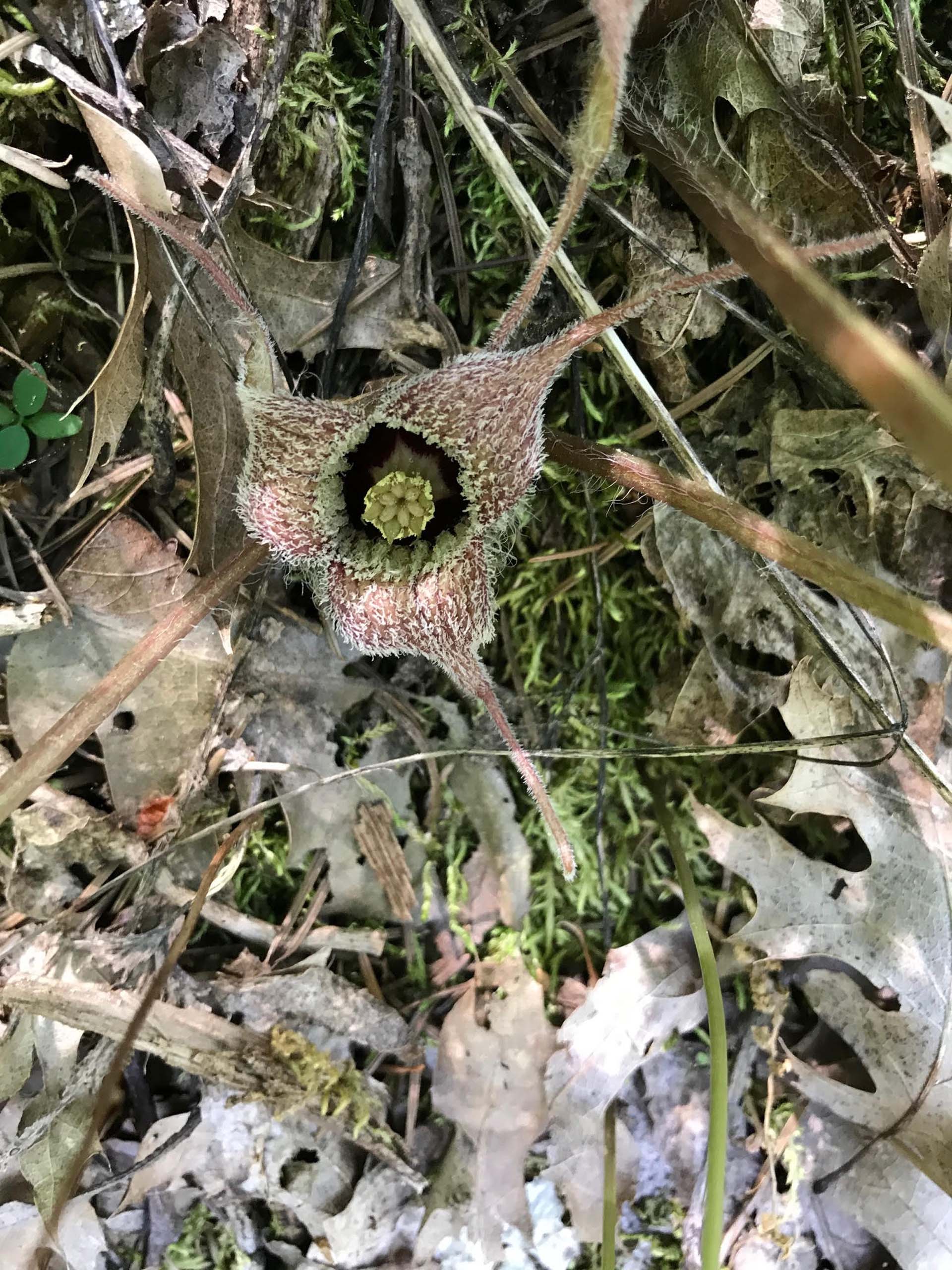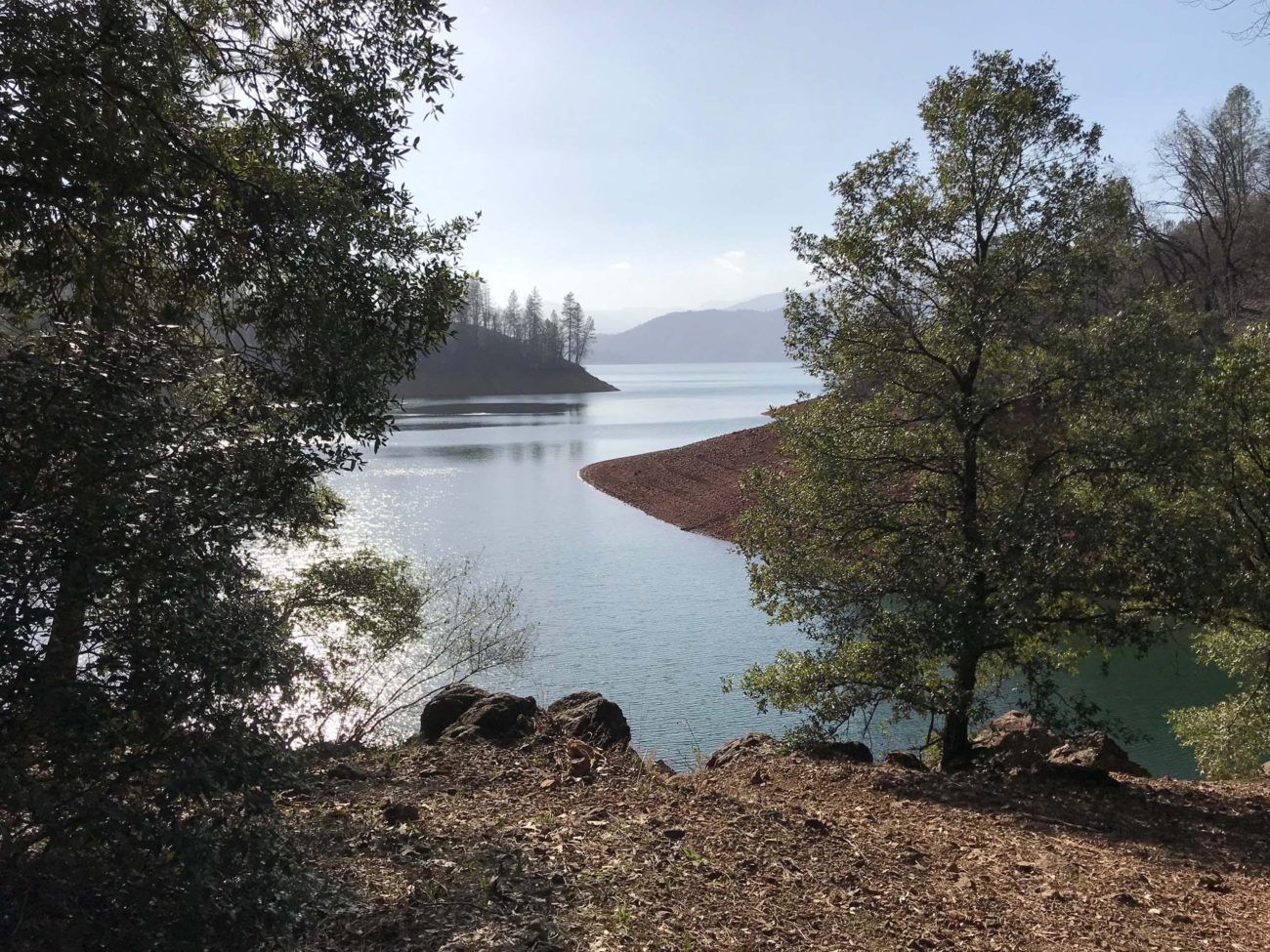
On Monday, April 27, 2020, naturalist and insect enthusiast Chris Gray and I walked part of the Waters Gulch Trail, in Lakehead, observing proper social distancing, of course. There were many species of fascinating flowers, and lots of interesting insects (FYI, bring mosquito repellent!). We were seeking a glimpse of Shasta snow-wreath (Neviusia cliftonii), a rare shrub found only on a few moist sites around Lake Shasta.
But first, a mere 50 yards down the trail, we spotted a beetle ballet on an ivory longtube iris (Iris tenuissima). I will let Chris tell you that story:
I have to say that I’m still feeling almost overwhelmed remembering all the amazing plants we encountered Monday. One insect–plant interaction that comes to mind was the frenetic gang of small beetles we witnessed landing on and taking off from the Iris tenuissima flowers, who appeared to be mating, and in the process causing a periodic rapid shaking or vibration of the flower petals. Could that surprising behavior be of benefit to the iris in some way? It suggested the possibility of some long-developed mutual benefit relationship.
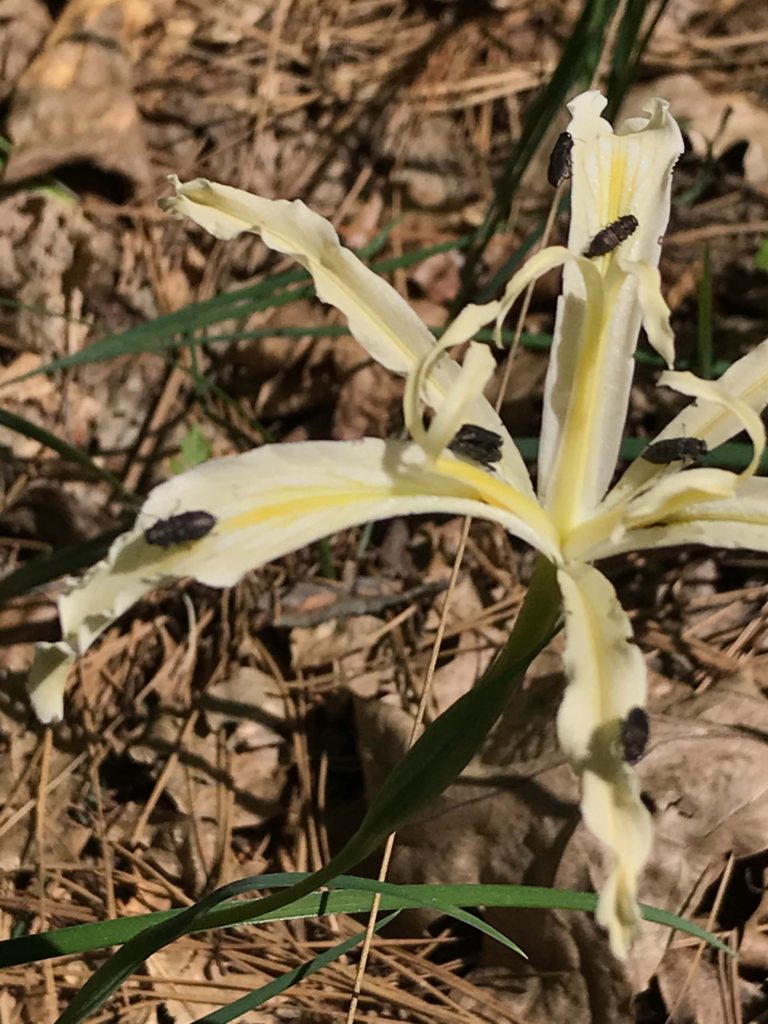
Because of my interest in plant–insect pollination relationships, the “beetle mania” event we witnessed on the Iris tenuissima flowers really caught my attention. The gang of tiny beetles (possibly Buprestids… I should have collected a couple) that descended on the long tepals – landing and taking off and landing again – sometimes in pairs – then running down the grooved length of the tepals and back again – appeared to be engaged in a mating frenzy.
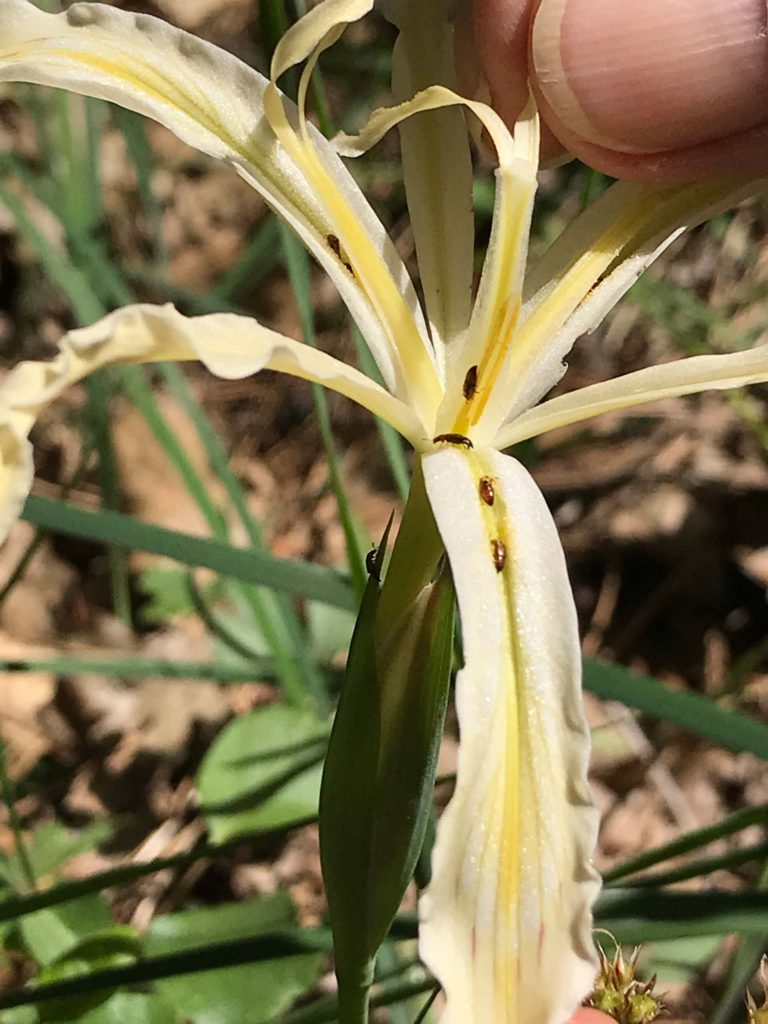
What was surprising to me was seeing the apparently mating pairs periodically vibrating in short bursts that actually produced visible shaking of the whole flower tepal. Seeing that happen several times reminded me of a pollen-releasing technique practiced by some bee species, known as “buzz pollination,” that frees up hard-to-extract pollen from certain plants, such as tomatoes and other nightshades. The bees grip the flowers and vibrate their wing muscles at high speed – without opening their wings – which shakes the flowers so vigorously that the hard-to-get pollen is released. Could those beetles be doing something similar with the iris flowers? I would like to learn how wild iris pollen is stored and released, and how the floral structure works. Perhaps this story is well studied. -Chris Gray
As we continued down the trail, we entered a wonderful leafy world. As Chris pointed out, “the Pacific Northwest really starts here.” I recognized western starflower (Lysmachia latifolia) and many other plants from my years living in Washington. The snow-wreath is about half a mile down the trail. Just for fun, keep going past the streamside bench and a rocky outcrop to the wilderness campsite (a bench, but no other facilities).
How to get there: search the Internet for Waters Gulch Trail, Lakehead area. Or use these directions: from Redding, take I-5 north. Get off at the O’Brien exit. Go left (back under the freeway), and go back onto the freeway headed south for just one mile, to Packer’s Bay exit. (Don’t overshoot the exit.) Take the Packer’s Bay exit. Turn right briefly, then left downhill toward the boat ramp. The trailhead parking lot is partway down the hill on the right. The trailhead gives you a choice. I like to take the right fork (downhill).
This is a botanist’s paradise. It’s the walk I make a point of doing each year. –Susan Libonati-Barnes
Please see the following slideshow for many more wildflowers seen on Waters Gulch Trail. All photography by Susan Libonati-Barnes.

